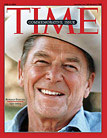Just Desserts (Or, you Get What You Pay For)
 Over at Black Star Rising, Scott Baradell highlights the latest from an imaging debacle, where a pet website owner wrote to Inc Magazine. Apparently, a microstock license by this store owner has become a problem, because a competing site is using the same image, and the writer wants to know about stopping it, as the photo is now the unofficial mascot of the site
Over at Black Star Rising, Scott Baradell highlights the latest from an imaging debacle, where a pet website owner wrote to Inc Magazine. Apparently, a microstock license by this store owner has become a problem, because a competing site is using the same image, and the writer wants to know about stopping it, as the photo is now the unofficial mascot of the site (Something akin to the deliberate decision years ago by Pets.com to make the sock puppet, at left, their official mastcot, but that's not the site that the pet store owner is objecting to). Scott, in his review cites several points, and also an interesting WSJ article, which you should click over to read. In addition, the piece notes "branding, by contrast, is like dressing for the Academy Awards: Off-the-rack won't cut it...Another option is to ditch your stock image, commission an original photo, and buy the rights..." but cautions about infringement, "...Trying to duplicate the stock photo is dangerous territory."
(Something akin to the deliberate decision years ago by Pets.com to make the sock puppet, at left, their official mastcot, but that's not the site that the pet store owner is objecting to). Scott, in his review cites several points, and also an interesting WSJ article, which you should click over to read. In addition, the piece notes "branding, by contrast, is like dressing for the Academy Awards: Off-the-rack won't cut it...Another option is to ditch your stock image, commission an original photo, and buy the rights..." but cautions about infringement, "...Trying to duplicate the stock photo is dangerous territory."
Over at ASMP, their article on RF shows an example of a college-age girl that clearly is getting both a Dell AND a Gateway computer! I have many other examples of these mishaps, but that's for a future article. The arguments continue to flow for why commissioning a photographer to produce original assignments - especially for marketing purposes - is the best way to ensure the uniqueness of your visuals that are used. There are many times when news photos - especially a single strong image of a current news event, makes it to the front page of several newspapers. This happens, of course, when the photo was not produced by a staffer, but rather a wire service or photo agency. It is then hoped that whatever text the paper runs provides a unique perspective, or, over time, readers might consider the papers interchangable, and thus, only subscribe to one.
The arguments continue to flow for why commissioning a photographer to produce original assignments - especially for marketing purposes - is the best way to ensure the uniqueness of your visuals that are used. There are many times when news photos - especially a single strong image of a current news event, makes it to the front page of several newspapers. This happens, of course, when the photo was not produced by a staffer, but rather a wire service or photo agency. It is then hoped that whatever text the paper runs provides a unique perspective, or, over time, readers might consider the papers interchangable, and thus, only subscribe to one. A sidebar in this PDN article notes about Time's photo editor "At some point over the weekend Time editors found out Newsweek was going to run the same cover, but Stevenson says, "It wasn't going to make us change our minds." I would, however, submit that there were countless other strong photos of Reagan, and a change should have been made. These two photos made a point that the two magazines are interchangable (to a small degree), and diminishes the uniqueness of each.
A sidebar in this PDN article notes about Time's photo editor "At some point over the weekend Time editors found out Newsweek was going to run the same cover, but Stevenson says, "It wasn't going to make us change our minds." I would, however, submit that there were countless other strong photos of Reagan, and a change should have been made. These two photos made a point that the two magazines are interchangable (to a small degree), and diminishes the uniqueness of each.
When you commission your photography, you pay a premium - and rightly so - for an original creation by the photographer that you, as the commissioning party, have first rights to use. When you license an image, as our pet store owner learned, make sure you obtain an exclusive license from the image provider, or risk consumer confusion after your advertising dollars and visual-brand-investment have already been made.
Otherwise, you get what you pay for.
UPDATE: What the duck has a funny take on this general issue:

Please post your comments by clicking the link below. If you've got questions, please pose them in our Photo Business Forum Flickr Group Discussion Threads.

3 comments:
Ahhh, just another case of someone using microstock and screwing the pooch...
Did not the photographer of Reagan retain his rights and make out like a bandit on these covers? Was it not the Photographer who helped sell these shots???
Michael Evans, was the photographer. The point on this is detracting from the point of the article, that is the duplicity images have for different products when the rights are not managed. That is what we need to show/share whne nego. rates. I have ripped both examples off as prints into my portfolio to demonstrate the drawbacks for RF images.
But to Evans, I say Hooraah that his image had the strength through time to be chosen twice for a cover at the same time. That says more to the powere/impact a photographer can have. As to the biz side, someone correct me if I am wrong, but he made 40K or so per cover with this shot?
Bob Roberts
SF, CA
Post a Comment